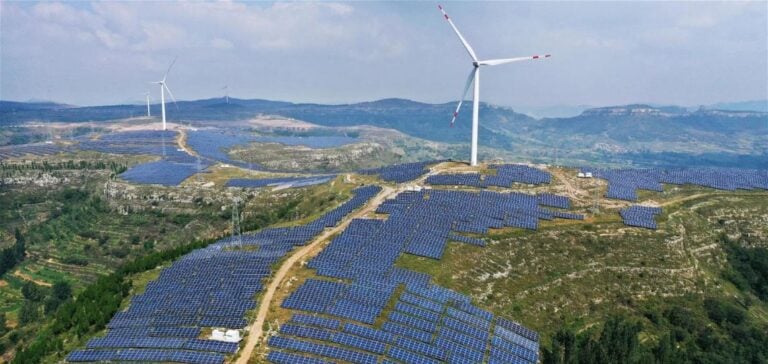Recently, the Chinese Energy Administration changed the structure of its monthly report, omitting crucial data on the utilization rates of wind and solar power plants. Until now, these reports have included specific details of average operating hours by type of generation, such as hydro, thermal, nuclear, wind and solar. From now on, the report will provide only global figures for the period January to May, with no distinction by source.
This change comes after previous data revealed a steady decline in utilization rates for wind and solar installations. Between January and April, average operating hours for wind power plants fell by 77 hours to 789 hours, while those for solar power plants dropped by 42 hours to 373 hours. By contrast, hydroelectric and thermal power plants recorded an increase in operating hours, underlining a shift in power generation dynamics.
Impact of the New Regulations
This change in transparency coincides with a major regulatory adjustment in May, when the Chinese government raised the renewable energy reduction limit from 5% to 10%. This mechanism, used by grid operators to balance supply and demand, could make it possible to integrate more renewable capacity, but at potentially lower utilization rates. In fact, the reduction means that some renewable energy production will be stopped to maintain grid balance.
The increase in this limit is intended to encourage the construction of new renewable energy facilities. However, this could also mean that installed capacity will not be optimally utilized, posing challenges in terms of profitability and return on investment for operators in the sector.
Consequences for the Energy Sector
The decision to stop publishing this critical data raises important questions about transparency and the ability to track the performance of renewable infrastructures. This development comes at a time when China is investing heavily in modernizing its power grid, in particular through ultra-high-voltage transmission lines designed to better integrate renewable energy sources.
Investors and market operators must now adapt to this new reality, with reduced visibility on the specific performance of different energy generation sources. The ability to accurately assess the effectiveness of investments in renewable energies then becomes crucial for strategic planning and decision-making.
Strategy and outlook
For industry players, it is essential to understand the implications of these changes. The reduction in available data makes it difficult to assess the performance of new renewable installations. Investors therefore need to be doubly cautious and diligent in navigating this uncertain landscape.
In the longer term, China’s strategy could aim to balance the rapid growth of renewable energies with the stability of the national power grid. Increasing ultra-high voltage transmission capacity and adjusting curtailment rules are steps towards a more resilient infrastructure. However, the success of this transition will depend on the ability to maintain high utilization rates for new facilities while guaranteeing attractive returns for investors.






















